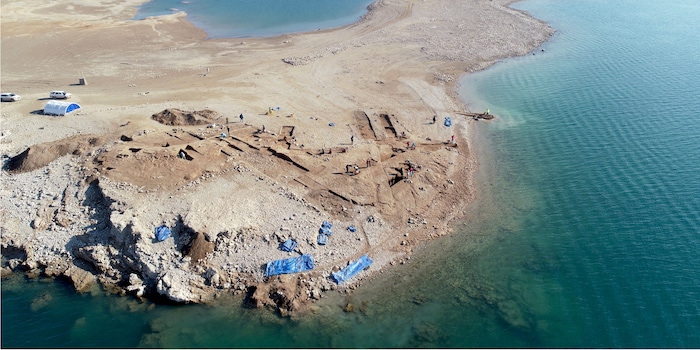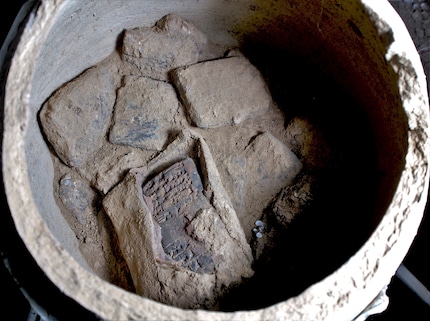
Sunken city on the Tigris uncovered
For more than 40 years, a Bronze Age city in the Mosul reservoir remained missing. Now it could be uncovered after persistent drought.
Experts have excavated a 3400-year-old city on the Tigris River. The remains of the Bronze Age city had previously been submerged for several decades in Iraq's Mosul reservoir, whose water level had recently dropped sharply due to extreme drought. This was reported by a German-Kurdish excavation team in a press release from the University of Freiburg. The city could be the ancient Zachiku, an important center of the great empire of Mittani, which had existed between 1550 and 1350 BC.
The south of Iraq was particularly affected by a prolonged drought in late 2021. In order to continue irrigating the fields, large amounts of water were drained from the reservoir, the researchers report. As a result, the water level of the lake had dropped so low that the city complex at the edge of the water body in Kemune reappeared. The excavation already took place in early 2022 - before the archaeological site disappeared into the lake again.
Earthen buildings in astonishingly good condition
The experts were able to reconstruct the city plan to a large extent and uncover some previously unknown large buildings: including a massive fortification, a multi-story magazine building and a workshop complex. The researchers noted that it was astonishing that the mud-brick buildings were still so well preserved - even though the remains had last been under water for more than 40 years. The good condition was probably caused by a severe earthquake around 1350 BC: Collapsing walls had buried and preserved the buildings.
In addition, the excavation team discovered five ceramic vessels with an archive of over 100 cuneiform tablets, which were probably created shortly after the earthquake. Some of these tablets were even still in clay envelopes. They may have been letters. "The fact that the cuneiform tablets made of unfired clay have survived so many decades under water borders on a miracle," said Peter Pfälzner, an archaeologist from the University of Tübingen who was jointly responsible for the project, in the press release. The cuneiform tablets could provide new insights into the end of the sunken city and the beginning of Assyrian rule in the region.

Source: Universität Freiburg
At the end of the excavation, the scientists took some protective measures: They covered the uncovered buildings with a plastic sheet and covered them with gravel, hoping to protect the mud walls from further water damage. In the meantime, the excavation site has completely disappeared into the reservoir again.
The fact that the Mosul reservoir reveals archaeological sites as the water level drops has happened before: In 2018, researchers uncovered the remains of a large palace that once towered above the Tigris Valley. A larger city probably adjoined the palace to the north. Inside the palace rooms, the archaeologists also discovered Mittan cuneiform tablets with clues that the Kemune site was likely the city of Zachiku.
Spectrum of Science
We are partner of Spektrum der Wissenschaft and want to make well-founded information more accessible to you. Follow Spektrum der Wissenschaft if you like the articles.
Originalartikel auf Spektrum.deTitelbild: Universität Freiburg
Experts from science and research report on the latest findings in their fields – competent, authentic and comprehensible.